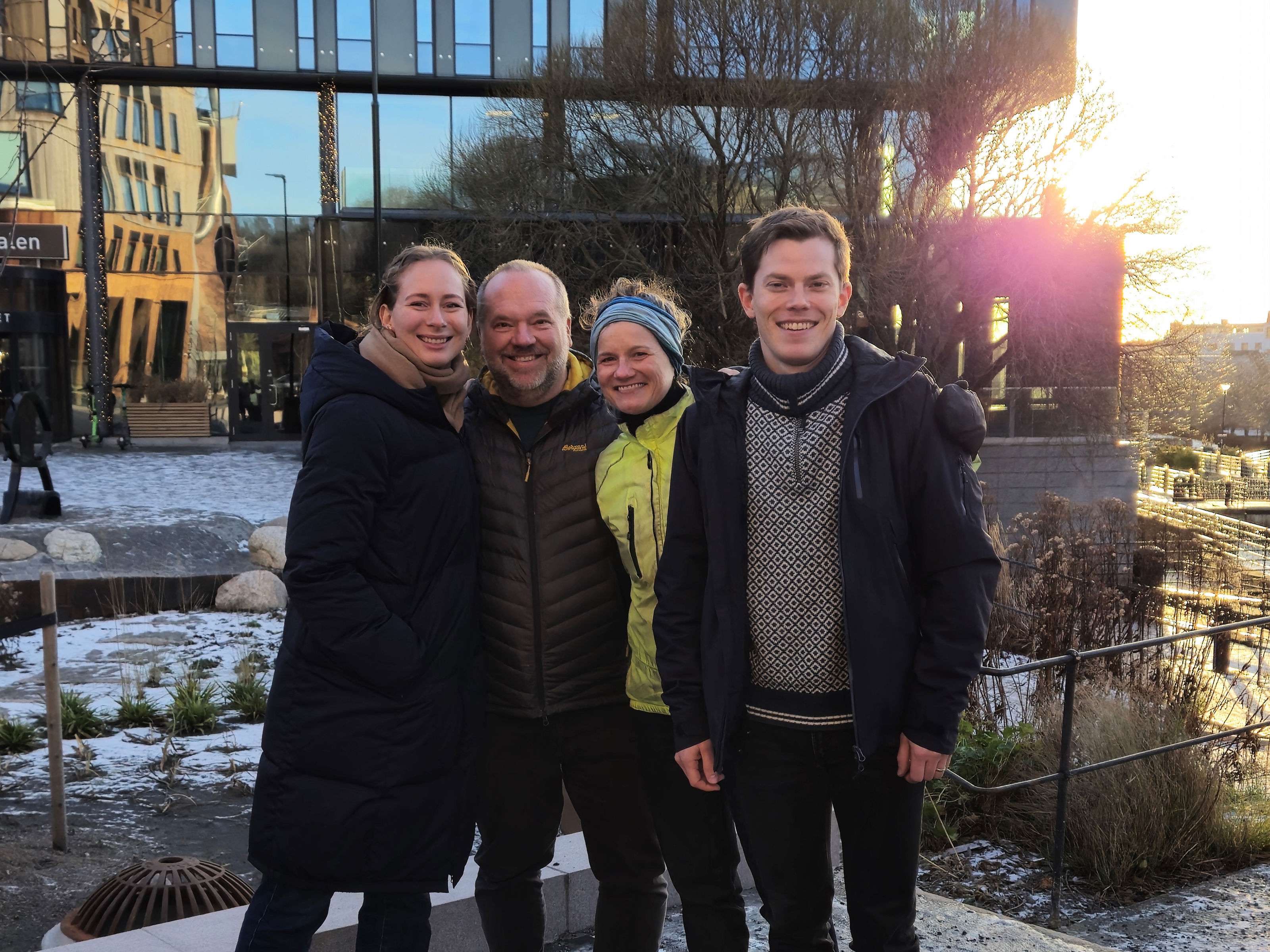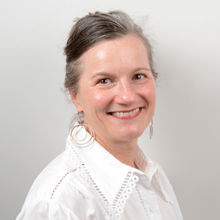NGI's Contribution to the REACHOUT Project
‘How to Build a Climate Story’ is a guide that aims to help practitioners communicate complex climate data to the public, making climate change information more accessible and engaging.

From the left: Nellie Sofie Body, James Michael Strout, Amy Oen and Sean Salazar. ( Photo: NGI.)
The Norwegian Geotechnical Institute (NGI), together with Climate Adaptation Services (CAS), has made significant strides in the REACHOUT project by developing a practical guide, ‘How to Build a Climate Story’ to test storytelling as a climate service and help practitioners communicate complex climate models, results and scientific data to the general public.
“This initiative is part of a broader effort to advance user-oriented climate services to make climate change information more accessible and engaging. Think of it as a way of bridging the gap between science and society,” says Dr. Amy Oen, a senior researcher and technical expert at NGI.
Dr. Oen is the project leader from NGI’s side and has developed the guide in collaboration with colleagues James Michael Strout, Sean Salazar, and Nellie Sofie Body.
Download the practical guide via the REACHOUT website.
What is a Climate Story?
Climate stories use storytelling techniques to convey topics related to climate change.
“For many, climate change feels abstract, distant, and complex, making it challenging to inform, educate, or engage effectively. Storytelling bridges this gap by transforming complex scientific data, model results, and knowledge into more relatable and understandable narratives”, says Dr. Oen.
Why Tell a Story?
Storytelling has been used throughout history to share experiences and make sense of the world.
She continues, “Stories connect with audiences on emotional and personal levels, and by including human and relatable elements, they create a shared understanding, making complex information easier to grasp.”
When to Use a Climate Story?
Climate stories are effective tools for compelling communication. They can deepen understanding, shift perspectives, or evoke emotional responses.
“While storytelling is not suitable for sharing detailed climate data or information, it can introduce complex topics, create interest, and encourage further exploration,” says Dr. Oen.
Spotlight on Six European Cities
The practical guide developed by REACHOUT features climate stories from six city hubs: Gdynia, Lillestrøm, Milan, Cork, Logroño, and Athens. These stories were co-created with each of the city hubs to highlight specific hazards relevant to each city and illustrate the climate impacts and climate action using the principles of storytelling, aiming to connect personally and build a shared understanding. The city hub examples inspire to help climate adaptation practitioners create their own climate stories to raise awareness about climate threats, share solutions, or inspire action.
The REACHOUT project is funded through the European Union’s Horizon 2020 program and is lead by Deltares. Illustrations by Ignacio Prieto.
For more information, visit the REACHOUT website.
